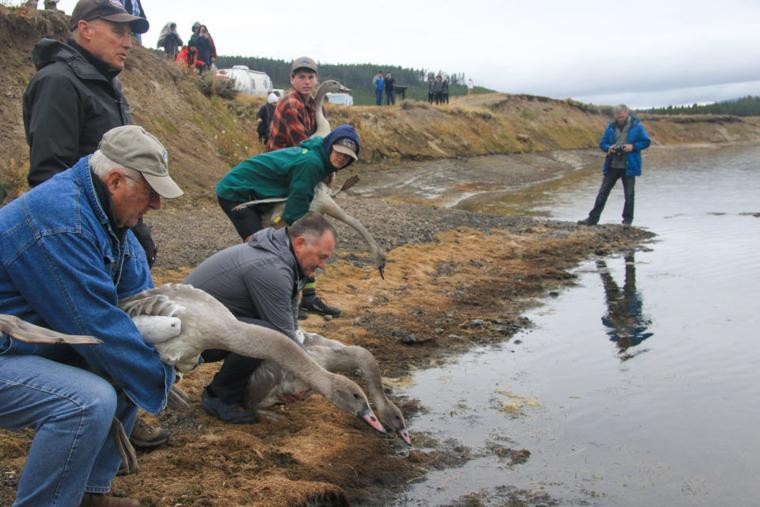Eight young trumpeter swans were released in Yellowstone National Park’s Hayden Valley earlier this year as part of an ongoing restoration project to halt the decline of the bird inside the park.
On Sept. 19, staff from the park, the Wyoming Wetlands Society, and Ricketts Conservation Foundation released the swans at Alum Creek in Hayden Valley.
“From a high of over 60 birds and 17 territorial pairs in the early 1960s, to only four birds in 2009 and 2010, the swan population has declined for a variety of reasons,” the park said in a news release. “Researchers are collecting population data such as nest success, number of territorial pairs, and the number of cygnets produced each year. This data may help determine the reasons for the decline.”
The Teton Basin Trumpeter Swan Restoration Project, a collaborative effort in the Driggs-Victor area, recently released six cygnets (young swans) onto a protected wetland in Teton Valley.
“(We) have been monitoring them for a month and have observed them bonding with a wild swan,” the Teton Regional Land Trust said in a recent news release.
The project is a partnership between the land trust, Idaho Fish and Game, U.S. Fish and Wildlife Service, Intermountain Aquatics and others.
The trumpeter swan is named for its musical call and is North America’s largest wild waterfowl with a wingspan of up to 8 feet, according to the park’s trumpeter webpage. The bird once nested from Alaska to northern Missouri but was nearly eliminated in the lower 48 states by 1930. About 70 birds survived in the Greater Yellowstone ecosystem and, after intensive management, recovered in the latter half of the century to about 63,000 today.
Numbers inside Yellowstone National Park show signs of rebounding after recent efforts to restore them. Swans were also released into the park in 2019.
“Recent releases and other restoration efforts have bolstered the population to over 20 birds and five territorial pairs, including natural reproduction in some years,” the park said.
Park biologists say limiting factors for swans in Yellowstone appear to be flooding of nests, predation, possibly effects of drought caused by climate change, and less immigration into the park from outside locations.
There is no hunting season for trumpeter swans in Idaho.
The park said the effort is a public/private partnership between the National Park Service, Wyoming Wetlands Society, Ricketts Conservation Foundation, and Montana State University.
A short video of the release can be seen here: facebook.com/YellowstoneNPS/posts/2948153785199956.



